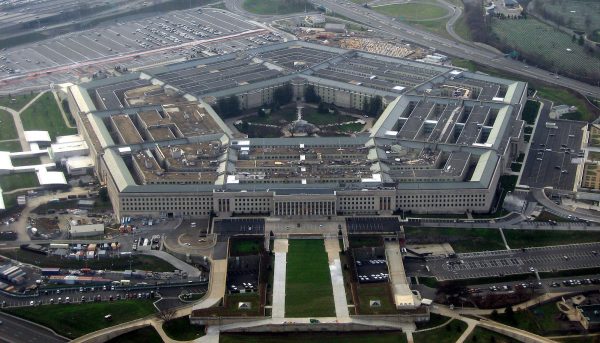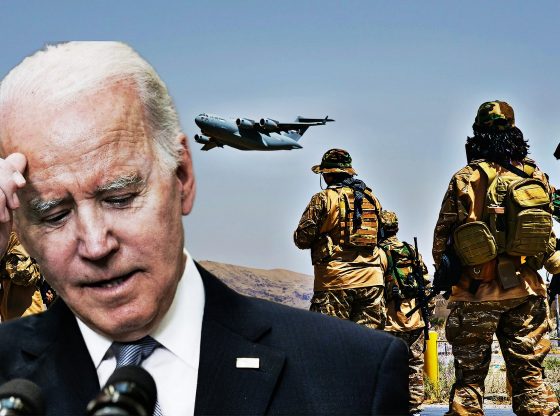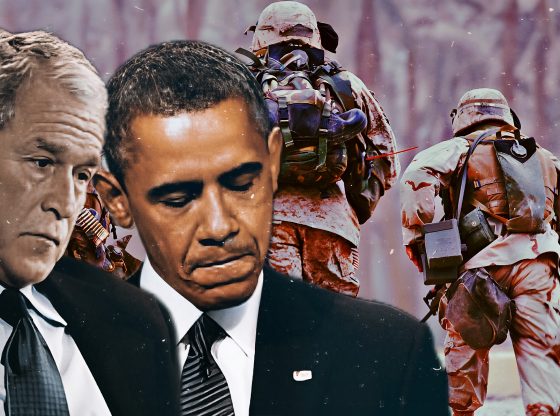Whenever the establishment media want to downplay the Chinese or Russian military threats, they quickly whip out their well-worn but false ‘comparative defense spending’ tropes. To wit – “The U.S. spends more on defense than the next ten countries combined.” And “China only spends a fraction of the U.S. on their military,” etc., etc.
If these reports were to be believed, China would not have thousands of killer missiles and new warships and aircraft threatening the US Pacific fleet (RELATED: Gray Zone Conflict – Disguised Chinese ‘Naval Forces’ on the Move). It would not be doubling its nuclear forces in the next decade or establishing bases in Africa.
And Russia would not have bleeding edge hypersonic missiles, or new nuclear torpedoes, or be expanding its military into North Africa and the Arctic (RELATED: Russia’s Reckless ‘GRU’ Military Intelligence Could Start War With U.S.).
It is time to put these misleading defense spending myths to rest.
As Jason Orestes explains in Free Pressers, using conventional accounting metrics of global comparative defense spending is woefully inadequate to gain a true picture.
Orestes explains, “Comparing defense capabilities of countries with different currencies and economic abilities is a more complicated task than simply converting their accounting to U.S. dollars and then seeing whose is biggest (you’ll note all those figures are in U.S. dollars).”
Based on that simple metric, the U.S. spends $750 billion per year on defense. China comes in at a distant second at $237 billion, and it drops off dramatically from there. Using those numbers, the defense expenditure of every other country COMBINED in the top 10 spends $653.2 billion.
That is $100 billion less than what the U.S. alone spends.
According to these calculations, Russia is 8th in global defense spending, at a measly $48 billion, about par with South Korea.
However, as Orestes notes, “this metric is deceptive and provides a false sense of American superiority. Not of our abilities, but in understanding the actual capacity of our adversaries, namely Russia and China.” As Orestes explains:
South Korea is nominally spending about as much as Russia but doesn’t come anywhere near these kinds of faculties. You don’t need to be a geopolitical warfare strategist to understand that Russian nuclear and conventional forces are vastly superior to those of Germany or the UK, both of which purportedly spend more. Clearly Russia must be able get more for its money than its nominal budget would suggest.
The same can be seen with China’s recent massive military buildup. That is why there are several things fatally wrong with this approach.
Firstly, counting on Beijing or Moscow to publish accurate defense data is a fallacy. In closed, repressive regimes like these where even the most mundane economic data is considered a national security secret, imagine how they treat their defense spending figures.
Frederico Bartels at The Heritage Foundation, adds a second key factor – how Beijing accounts for its military research and development. “Put simply,” Bartels says, “it doesn’t include it in any of its reports on military expenditures.” He adds that we can only properly compare the resources Beijing dedicates to defense with what other countries spend by removing all military R&D from the equation.
Thirdly, is how the figures are calculated. Direct translation of different countries’ given figures means little. What the U.S. gets for its dollar is not remotely like what China or Russia get for their dollar (or ruble, or yuan). Using Purchasing Power Parity (PPP) helps get a far better picture of how global defense budgets compare materiel costs.
However, Bartels argues, even “PPP is not a good index for military labor costs. A far better proxy is reported government employees’ salaries.”
Once all these different factors are taken into consideration, we get a far different picture. Using 2017 defense spending data on China, for example, Bartels notes that the People’s Liberation Army (PLA) budget can buy the equivalent of 87 percent of the Pentagon’s budget.
This, he says, explains how Beijing can afford an active military force of 2 million vs. America’s 1.3 million. It also shows how the PLA Navy can launch about 14 ships each year, while the U.S. Navy commissions around five.
When you combine the PPP military spending of just Russia and China together, we get a figure of about $850 billion – that is $100 billion MORE than the U.S. defense budget. So much for the “more than all other countries in the top 10 combined” nonsense.
While the Pentagon and U.S. Intelligence Community (IC) surely know all this, it needs to be more widely reported. Last year, notes The Heritage Foundation, the U.S.-China Economic and Security Review Commission’s annual report and the Defense Intelligence Agency’s (DIA) China Military Power analysis “dedicated a combined five pages to Beijing’s defense budget with no discussion of any independent estimates’ methodology.”
That is clearly inadequate.
As Frederico Bartels further said, “If we, as a country, are going to be able to compete effectively with the People’s Republic of China, we need to understand it better. A great step towards better understanding is to assess accurately how it resources its military.”
Amen to that.
READ NEXT: Trump Withdraws From Faulty Arms Treaty to Counter China >>

Advertisement
Support the Landmark Lawsuit Against Antifa
















Does it really matter that russia and china are spending huge sums on military build up, after all the communist traitors are in charge of the United States military and will let them walk straight into America when they are ready!
Democrats are the CHAMBERLAIN of today. They would rather lay down and surrender to ANY enemy than defend our nation. WHY? They belong to ONE WORLD ORDER
When comparing military expenditure or the US to China it’s meaningless. China uses slave manual labor to build arms and their engineers and scientists get paid next to nothing and work for the status and have a low cost of living compared to those in the USA. Russian workers are cheap labor too. So the dollars spent is a poor comparison. China tasks 100 engineers on a project that 2 or 3 US engineers would. Something needs to change here in the US if we are to keep up with the communists. Maybe the solution is reimbursement of engineering and science graduates if they decide to work for a defense contractor or join the military as an officer after graduating. This will give the graduates a head start and guarantee enough engineers and scientists for the defense industry.
China has us wasting our time, money and effort on a pandemic that put our economy and our military into a stall. It’s backing a communist movement in our country that is debilitating. Our educational system is weak and failing our kids and our future. Our allies are ineffective and complacent. We are a country divided and we’re expected to look out for the world’s best interest. Can’t be done if we’re not working, money’s not flowing and the military is weakening. China has the people, it has an authoritarian governmental style, it’s economy is solely for the advancement of its military and it’s colonial investments. Do we have a chance? Don’t think so.